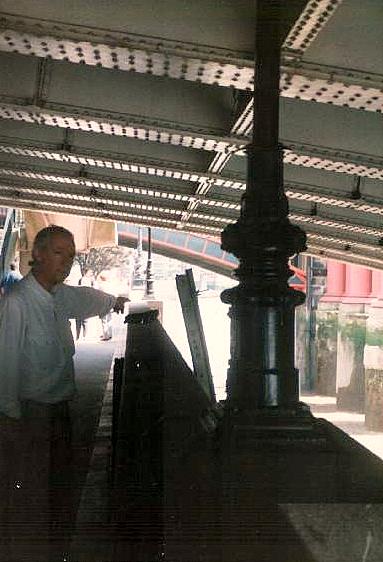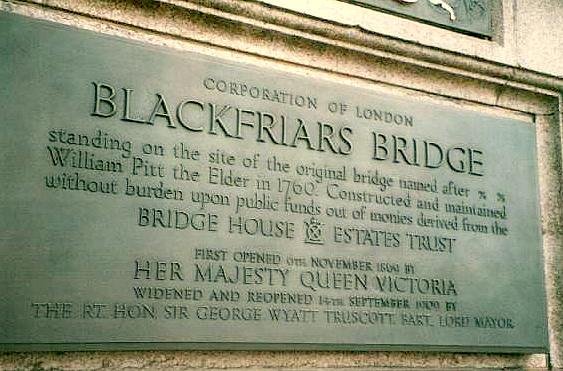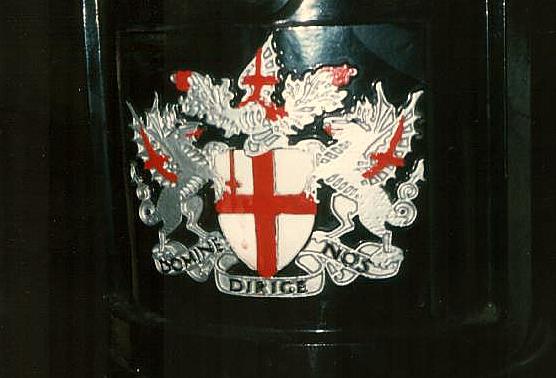'Historicism' of the anti-Christ as the historical Roman Catholic Church
From http://www.lmn.org/magazine/170/Jesuits.html
By Steve Wohlberg
Pastor Wohlberg currently lives in Fort Worth, Texas. This article is adapted from his recent books, Truth Left Behind and The Left Behind Deception.
Modern Christianity has largely forgotten the importance of the Protestant Reformation, which took place during the 1500s. “The sixteenth century presents the spectacle of a stormy sunrise after a dismal night. Europe awoke from long sleep of superstition. The dead arose. The witnesses to truth who had been silenced and slain stood up once more and renewed their testimony. The martyred confessors reappeared in the Reformers. There was a cleansing of the spiritual sanctuary. Civil and religious liberty were inaugurated. The discovery of printing and revival of learning accelerated the movement. There was progress everywhere. Columbus struck across the ocean and opened a new hemisphere to view. Rome was shaken on her seven hills, and lost one-half of her dominions. Protestant nations were created. The modern world was called into existence.”1
For almost a thousand years, Europe had been ruled by the iron hand of Rome. Only a few Bibles existed then, and Christianity was largely permeated with superstition. Faith in Jesus Christ, heartfelt appreciation for His love, and a simple trust in His death on the cross, were almost unknown. The New Testament truth about grace, full forgiveness, and the free gift of eternal life to believers in the Son of God (Romans 6:23), had been buried under a mass of tradition. Then Martin Luther arose like a lion in Germany. After a period of tremendous personal struggle, Martin Luther began teaching justification by faith in Jesus Christ (being declared “just” by God), rather than through reliance on “creature merits,” or any human works (Romans 1:16; 3:26, 28; 5:1). Martin Luther, as well as all of the other Reformers, were unanimous in their interpretation of the Antichrist as the papacy.Luther’s Discovery
Martin Luther, as well as all of the other Reformers, were unanimous in their interpretation of the Antichrist as the papacy.Luther’s Discovery
Eventually, Martin Luther turned to the prophecies. By candlelight, he read about the “little horn,” the “man of sin,” and “the beast,” and he was shocked as the Holy Spirit spoke to his heart. Finally, he saw the truth and said to himself, “Why, these prophecies apply to the Roman Catholic Church!” As he wrestled with this new insight, the voice of God echoed loudly in his soul, saying, “Preach the word!” (2 Timothy 4:2). And so, at the risk of losing his life, Martin Luther preached publicly and in print to an astonished people that Papal Rome was indeed the Antichrist of Bible prophecy. Because of this dual message of salvation through faith in Jesus Christ apart from works and of Papal Rome being the Antichrist, the river of history literally changed its course. Hundreds of thousands of people in Europe and in England left the Catholic Church.
“‘There are two great truths that stand out in the preaching that brought about the Protestant Reformation,’ American Bible Commentator, Ralph Woodrow, reminds us, ‘The just shall live by faith, not by the works of Romanism and the Papacy is the Antichrist of Scripture.’ It was a message for Christ and against Antichrist. The entire Reformation rests upon this twofold testimony.’”2 It has been said that the Reformation first discovered Jesus Christ, and then, in the blazing light of Christ, it discovered the Antichrist. This mighty, Spirit-filled movement, for Christ and against the Antichrist, shook the world.
H. Grattan Guinness wrote these memorable words: “From the first, and throughout, that movement [the Reformation] was energized and guided by the prophetic word. Luther never felt strong and free to war against the Papal apostasy till he recognized the pope as Antichrist. It was then that he burned the Papal bull. Knox’s first sermon, the sermon that launched him on his mission as a reformer, was on the prophecies concerning the Papacy. The reformers embodied their interpretations of prophecy in their confessions of faith, and Calvin in his ‘Institutes.’ All of the reformers were unanimous in the matter, even the mild and cautious Melanchthon was as assured of the antipapal meaning of these prophecies as was Luther himself. And their interpretation of these prophecies determined their reforming action. It led them to protest against Rome with extraordinary strength and undaunted courage. It nerved them to resist the claims of the apostate Church to the utmost. It made them martyrs; it sustained them at the stake. And the views of the Reformers were shared by thousands, by hundreds of thousands. They were adopted by princes and peoples. Under their influence nations abjured their allegiance to the false priest of Rome.
“In the reaction that followed, all the powers of hell seemed to be let loose upon the adherents of the Reformation. War followed war: tortures, burnings, and massacres were multiplied. Yet the Reformation stood undefeated and unconquerable. God’s word upheld it, and the energies of His Almighty Spirit. It was the work of Christ as truly as the founding of the Church eighteen centuries ago; and the revelation of the future which He gave from heaven—that prophetic book with which the Scripture closes—was one of the mightiest instruments employed in its accomplishment.”3
A Counter-Reformation
In 1545, the Catholic Church convened one of its most famous councils in history, which took place north of Rome in a city called Trent. The Council of Trent actually continued for three sessions, ending in 1563. One of the main purposes of this Council was for Catholics to plan a counterattack against Martin Luther and the Protestants. Thus the Council of Trent became a center for Rome’s Counter-Reformation. Up to this point, Rome’s main method of attack had been largely frontal—the open burning of Bibles and of heretics. Yet this warfare only confirmed in the minds of Protestants the conviction that Papal Rome was indeed the Beast which would “make war with the saints” (Revelation 13:7). Therefore a new tactic was needed, something less obvious. This is where the Jesuits come in.
On August 15, 1534, Ignatius Loyola (in the title picture) founded a secretive Catholic order called the Society of Jesus, also known as the Jesuits. The Jesuits definitely have a dark history of intrigue and sedition, that’s why they were expelled from Portugal (1759), France (1764), Spain (1767), Naples (1767), and Russia (1820). “Jesuit priests have been known throughout history as the most wicked political arm of the Roman Catholic Church. Edmond Paris, in his scholarly work, The Secret History of the Jesuits, reveals and documents much of this information.”4 At the Council of Trent, the Catholic Church gave the Jesuits the specific assignment of destroying Protestantism and bringing people back to the Mother Church. This was to be done not only through the Inquisition and through torture, but also through theology. At the Council of Trent, the Jesuits were commissioned to develop a new interpretation of Scripture that would counteract the Protestant Reformation, specifically, the application of the biblical Antichrist to the Roman Catholic Church.The Jesuit Commission
At the Council of Trent, the Jesuits were commissioned to develop a new interpretation of Scripture that would counteract the Protestant Reformation, specifically, the application of the biblical Antichrist to the Roman Catholic Church.The Jesuit Commission
At the Council of Trent, the Jesuits were commissioned by the Pope to develop a new interpretation of Scripture that would counteract the Protestant application of the Bible’s Antichrist prophecies to the Roman Catholic Church. Francisco Ribera (1537-1591), a brilliant Jesuit priest and doctor of theology from Spain, basically said, “Here am I, send me.” Like Martin Luther, Francisco Ribera also read by candlelight the prophecies about the Antichrist, the little horn, that man of sin, and the Beast. But because of his dedication and allegiance to the Pope, he came to conclusions vastly different from those of the Protestants. “Why, these prophecies don’t apply to the Catholic Church at all!” Ribera said. Then to whom do they apply? Ribera proclaimed, “To only one sinister man who will rise up at the end of time!” “Fantastic!” was the reply from Rome, and this viewpoint was quickly adopted as the official Roman Catholic position on the Antichrist. Francisco Ribera and Cardinal Robert Bellarmine, two Jesuit scholars, published works that taught that the Scriptures written by Paul, Daniel, and John had nothing whatsoever to say about the Papal power.--------------“In 1590, Ribera published a commentary on the Revelation as a counter-interpretation to the prevailing view among Protestants which identified the Papacy with the Antichrist. Ribera applied all of Revelation but the earliest chapters to the end time rather than to the history of the Church. Antichrist would be a single evil person who would be received by the Jews and would rebuild Jerusalem.”5 “Ribera denied the Protestant Scriptural Antichrist (2 Thessalonians 2) as seated in the church of God—asserted by Augustine, Jerome, Luther and many reformers. He set on an infidel Antichrist, outside the church of God.”6 “The result of his work [Ribera’s] was a twisting and maligning of prophetic truth.”7
Francisco Ribera and Cardinal Robert Bellarmine, two Jesuit scholars, published works that taught that the Scriptures written by Paul, Daniel, and John had nothing whatsoever to say about the Papal power.--------------“In 1590, Ribera published a commentary on the Revelation as a counter-interpretation to the prevailing view among Protestants which identified the Papacy with the Antichrist. Ribera applied all of Revelation but the earliest chapters to the end time rather than to the history of the Church. Antichrist would be a single evil person who would be received by the Jews and would rebuild Jerusalem.”5 “Ribera denied the Protestant Scriptural Antichrist (2 Thessalonians 2) as seated in the church of God—asserted by Augustine, Jerome, Luther and many reformers. He set on an infidel Antichrist, outside the church of God.”6 “The result of his work [Ribera’s] was a twisting and maligning of prophetic truth.”7
Cardinal Robert Bellarmine, who helped popularize and propagate the futuristic interpretation of biblical prophecy.Following close behind Francisco Ribera was another brilliant Jesuit scholar, Cardinal Robert Bellarmine (1542-1621) of Rome. Between 1581 and 1593, Cardinal Bellarmine published his “Polemic Lectures Concerning the Disputed Points of the Christian Belief Against the Heretics of This Time.” In these lectures, he agreed with Ribera. “The futurist teachings of Ribera were further popularized by an Italian cardinal and the most renowned of all Jesuit controversialists. His writings claimed that Paul, Daniel, and John had nothing whatsoever to say about the Papal power. The futurists’ school won general acceptance among Catholics. They were taught that Antichrist was a single individual who would not rule until the very end of time.”8 Through the work of these two tricky Jesuit scholars, we might say that a brand new baby was born into the world. Protestant historians have given this baby a name—Jesuit Futurism. In fact, Francisco Ribera has been called the Father of Futurism.
Defining the Issue
Before we go much farther, let’s define some terms. Historicism is the belief that Biblical prophecies about the little horn, the man of sin, the Antichrist, the Beast, and the Babylonian Harlot of Revelation 17, all apply to the developing history of Christianity and to the ongoing struggle between Jesus Christ and Satan within the Christian Church, culminating at the end of time. Historicism sees these prophecies as having a direct application to Papal Rome as a system whose doctrines are actually a denial of the New Testament message of free salvation by grace through simple faith in Jesus Christ, apart from works. Historicism was the primary prophetic viewpoint of the Protestant Reformers. In direct opposition to Historicism, and rising up as a razor-sharp counterattack on Protestantism, was that of the Jesuits with their viewpoint of Futurism, which basically says, “The Antichrist prophecies have nothing to do with the history of Papal Rome, rather, they apply to only one sinister man who comes at the end.”
Thus Jesuit Futurism sweeps 1,500 years of prophetic history under the proverbial rug by inserting its infamous GAP. This theory teaches that when Rome fell, prophecy stopped, only to continue again right around the time of the Rapture, thus the “gap” was created. The ten horns, the little horn, the Beast, and the Antichrist have nothing to do with Christians until this “last-day Antichrist” should appear. According to this viewpoint, there were no prophecies being fulfilled during the Dark Ages!
Inroads in Protestantism
For almost 300 years after the Council of Trent, Jesuit Futurism remained largely inside the realm of Catholicism, but the plan of the Jesuits was that these theological tenets be adopted by Protestants. This adoption process actually began in the early 1800s in England, and from there it spread to America. The story of how this happened is both fascinating and tragic. As I briefly share some of the highlights, I want to clarify that I am not judging the genuineness of these Christian men. They may have been sincere, yet at the same time deceived in some areas of their theological understanding.
“The Futurism of Ribera never posed a positive threat to the Protestants for three centuries. It was virtually confined to the Roman Church. But early in the nineteenth century it sprang forth with vehemence and latched on to Protestants of the Established Church of England.”9 Dr. Samuel Roffey Maitland (1792-1866), a lawyer and Bible scholar, became a librarian to the Archbishop of Canterbury. It is very likely that one day he discovered Ribera’s commentary in the library. In any event, in 1826 he published a widely-read book attacking the Reformation and supporting Ribera’s idea of a future one-man Antichrist. For the next ten years, in tract after tract, he continued his anti-Reformation rhetoric. As a result of his zeal and strong attacks against the Reformation in England, the Protestantism of that very nation which produced the King James Bible (1611) received a crushing blow.
After Dr. Maitland came James H. Todd, a professor of Hebrew at the University of Dublin. Todd accepted the futuristic ideas of Maitland, publishing his own supportive pamphlets and books. Then came John Henry Newman (1801-1890), a member of the Church of England and a leader of the famous Oxford Movement (1833-1845). In 1850, Newman wrote his “Letter on Anglican Difficulties,” revealing that one of the goals in the Oxford Movement was to finally absorb “the various English denominations and parties” back into the Church of Rome. After publishing a pamphlet endorsing Todd’s futurism about a one-man Antichrist, Newman soon became a full Roman Catholic, and later even a highly honored Cardinal. Through the influence of Maitland, Todd, Newman, and others, a definite “Romeward movement was already arising, destined to sweep away the old Protestant landmarks, as with a flood.”10
Then came the much-respected Scottish Presbyterian minister, Edward Irving (1792-1834), the acknowledged forerunner of both the Pentecostal and Charismatic Movements. Irving pastored the large Chalcedonian Chapel in London with over 1,000 members. When Irving turned to the prophecies, he eventually accepted the one-man Antichrist idea of Todd, Maitland, Bellarmine, and Ribera, yet he went a step further. Somewhere around 1830, Edward Irving began to teach the unique idea of a two-phase return of Christ, the first phase being a secret rapture prior to the rise of the Antichrist. Where he got this idea is a matter of much dispute. Journalist Dave MacPherson believes Irving accepted it is a result of a prophetic revelation given to a young Scottish girl named Margaret McDonald.11 In any case, the fact is, Irving taught it!
Futurism in America
One of the most important figures in this whole drama is Cyrus Ingerson Scofield (1843-1921), a Kansas lawyer who was greatly influenced by the writings of Darby. In 1909, Scofield published the first edition of his famous Scofield Reference Bible. In the early 1900s, this Bible became so popular in American Protestant Bible schools that it was necessary to print literally millions of copies. Yet, in the much-respected footnotes of this very Bible, Scofield injected large doses of the fluid of Futurism also found in the writings of Darby, Todd, Maitland, Bellarmine, and Ribera. Through the Scofield Bible, the Jesuit child reached young adulthood. The doctrine of an Antichrist still to come was becoming firmly established inside 20th-century American Protestantism.
Now we have Left Behind. In the 1990s, Tim LaHaye and Jerry Jenkins took the future one-man Antichrist idea of Hal Lindsey, Scofield, Darby, Irving, Newman, Todd, Maitland, Bellarmine, and Ribera, and turned it into “The most successful Christian-fiction series ever” (Publishers Weekly). Hal Lindsey’s book, The Late Great Planet Earth, was largely theological, which limited its appeal, while Left Behind is a sequence of highly imaginative novels, “overflowing with suspense, action, and adventure,” a “Christian thriller,” with a “label its creators could never have predicted: blockbuster success” (Entertainment Weekly). The much-respected television ministries of Jack Van Impe, Peter and Paul Lalonde, and Pastor John Hagee, have all worked together to produce LEFT BEHIND: The Movie. The entire project has even caught the attention of the New York Times and the Wall Street Journal, resulting in an interview of LaHaye and Jenkins on Larry King Live. The Left Behind books have been made available on displays at WalMart, Fry’s Electronics, and inside countless other stores.----------------Again, let me clarify, I am not judging the genuineness of the authors of Left Behind and the leaders of these television ministries. They may be sincere, and have their own walk with God. But they are deceived into wrong ideas concerning Bible prophecy. God may even use Left Behind to influence people for Jesus Christ. But, in the full light of Scripture, prophecy, and the Protestant Reformation, something is terribly wrong. Left Behind is now teaching much of the same Jesuit Futurism as Francisco Ribera, which is hiding the real truth about the Antichrist. Through Left Behind, the floodgates of Futurism have been opened, unleashing a massive tidal wave of false prophecy which is now sweeping over America. Sadly, it is a false “idea whose time has come.”
The Prophetic Foundation
As we have already seen, the theological foundation for the entire Left Behind series is the application of the “seven years” of Daniel 9:27 to a future period of Tribulation. Are you ready for this? Guess who was one of the very first scholars to slice Daniel’s 70th week away from the first 69 weeks, sliding it down to the end of time? It was Francisco Ribera! “Ribera’s primary apparatus was the seventy weeks. He taught that Daniel’s 70th week was still in the future. . . It was as though God put a giant rubber band on this Messianic time measure. Does this supposition sound familiar? This is exactly the scenario used by Hal Lindsey and a multitude of other current prophecy teachers.”12
When most Christians look at the last 1,500 years, how much fulfilled prophecy do they see? None, zero, because almost everything is now being applied to a future time period after the Rapture. As we have seen, this GAP idea originated with the Jesuits, and its insertion into the majority of 21st century prophetic teaching is now blinding millions of hearts and eyes to what has gone before, and to what is happening right now inside the Church. “It is this GAP theory that permeates Futurism’s interpretation of all apocalyptic prophecy.”13 In love and in the Spirit of Jesus Christ, someone should publicly appeal to the major prophetic television ministries of today to re-evaluate their positions. Hopefully, like noble ships with a new command from their captain, they will yet change their course.
Jesuit Futurism has almost completely changed the beliefs of Protestant Historicism. “The proper eschatological term for the view most taught today is Futurism, which fuels the confusion of Dispensationalism. The futuristic school of Bible prophecy came from the Roman Catholic Church, specifically her Jesuit theologians. . . However the alternative has been believed for centuries. It is known as Historicism.”14 “It is a matter for deep regret that those who hold and advocate the Futurist system at the present day, Protestants as they are for the most part, are thus really playing into the hands of Rome, and helping to screen the Papacy from detection as the Antichrist.”15
Who Had It Right?
Who had the right theology—those who were burned at the stake for Jesus Christ, or those who lit the fires? Who had the true Bible doctrine—the martyrs or their persecutors? Who had the correct interpretation of the Antichrist—those who died trusting in the blood of Christ, or those who shed the blood of God’s dear saints? Dear friend, Jesuit Futurism is now at war with the Protestant Reformation by denying its power-packed application of prophecy to the Vatican. “The futurist school of Bible prophecy was created for one reason, and one reason only: to counter the Protestant Reformation!”16 In fact, Jesuit Futurism is at war with the prophecies of the Word of God itself! And if that’s not enough, consider this. Jesuit Futurism originated with the Roman Catholic Church, which makes it the very doctrine of the Antichrist! And when Christian ministries and movies like A Thief in the Night, Apocalypse, Revelation, Tribulation, and Left Behind, proclaim an Antichrist who comes only after the Rapture, what are they really doing? I shudder to even say it. Are you ready for this? They are sincerely and yet unknowingly teaching the doctrine of the Antichrist!
Now you know why truth has been left behind. You are now able to see The Left Behind deception. I appeal to you in the loving name of Jesus Christ, the Crucified One—Don’t fall for it.Notes1 H. Grattan Guinness, Romanism and the Reformation, p. 1222 Michael de Semlyen, All Roads Lead to Rome, Dorchester House Publications, Dorchester House, England, 1991, pp. 202, 2033 H. Grattan Guinness, Romanism and the Reformation, pp. 136, 1374 Robert Caringola, Seventy Weeks: The Historical Alternative. Abundant Life Ministries Reformed Press, 1991, p. 315 George Eldon Ladd, The Blessed Hope: A Biblical Study of the Second Advent and the Rapture. Grand Rapids, MI: Eerdmans, 1956, pp. 37-386 Ralph Thompson, Champions of Christianity in Search of Truth, p. 897 Robert Caringola, Seventy Weeks: The Historical Alternative, p. 328 Ralph Woodrow, Great Prophecies of the Bible, p. 1989 Ralph Thompson, Champions of Christianity in Search of Truth, p. 9110 H. Grattan Guinness, History Unveiling Prophecy or Time As an Interpreter, New York: Fleming H. Revell Co., 1905, p. 28911 Dave MacPherson, The Incredible Cover-Up: Exposing the Origins of Rapture Theories. Omega Publications, Medford Oregon, 198012 Robert Caringola, Seventy Weeks: The Historical Alternative, p. 3513 Ralph Thompson, Champions of Christianity in Search of Truth, p. 9014 Robert Caringola, Seventy Weeks: The Historical Alternative, p. 615 Joseph Tanner, Daniel and the Revelation: The Chart of Prophecy and Our Place in It, A Study of the Historical and Futurist Interpretation. London: Hodder and Stoughton, 1898, p. 1616 Robert Caringola, Seventy Weeks: The Historical Alternative, p. 34..Steve Wohlberg's books are available from the Laymen Ministries bookstore. Exploding the Israel Deception takes a look at the current popularity of seeking fulfillment of prophecy in the Middle East, and shows what the Bible indicates about these prophecies.
The Left Behind Deception is select chapters from Truth Left Behind. These books will give you the history of the teachings of the Rapture, and show you the truth of what the Scriptures say about it. The Left Behind Deception is a great gift for one who has questions on the Rapture, but isn't so in depth as to be overwhelming.
Source: http://www.lmn.org/magazine/170/Jesuits.html
Found at Endr Times
http://endrtimes.blogspot.com/2008/12/left-behind-by-jesuits.html


































.jpg)













